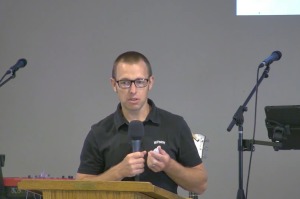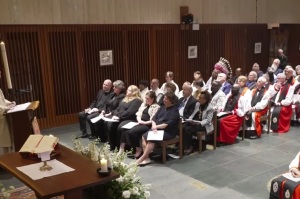Study Shows Churches Not Making Full Use of the Power of the Internet
Twenty-five percent of Protestant churches in the United States have virtually no involvement with the World Wide Web, according to a recent study conducted by Ellison Research.
Twenty-five percent of Protestant churches in the United States have virtually no involvement with the World Wide Web, according to a recent study conducted by Ellison Research.
The Phoenix-based research ministry surveyed a representative sample of 871 Protestant church ministers nationwide and found that 27 percent of churches have no Internet connection, staff email, or church website. However, the study – which first appeared in LifeWay's Facts & Trends Magazine on Jan. 6 – found that 58 percent of churches provide Internet access for their staff. A similar study conducted in 2004 by Ellison Research showed that 91 percent of ministers have Internet access. This information paired with the current study, suggests that ministers have personal access, but not at their churches.
Only half of all churches provide staff with e-mail, and just under half maintain a website, Ellison Research found. Relatively few Protestant churches use e-mail prayer chains, have an e-mail church newsletter, or have an online member directory (only four percent).
Churches in the South, churches with fewer than 100 congregants, and churches led by ministers over 60 are more likely not to have Internet access, the ministry stated further.
Presbyterian churches are the major denominational group most likely to be using the Internet (92 percent). But mainline and evangelical churches do not differ much in church use of the Web.
The study found that church website content is usually static rather than interactive. Content usually consists of a map or directions to the church, a calendar of upcoming events, a statement of beliefs, and pages for specific ministry departments. Half of the church websites list staff emails.
Other types of information include denominational information, staff biographies, special pages for youths, a regular church newsletter, a way to submit prayer requests online, and information about joining a small group.
Less likely to appear are Bible study material or helps, sermon transcripts, upcoming sermon titles or topics, sermons available in streaming audio, a bulletin board, forum, or chat room, sermons in streaming video, testimonies, and a way to donate online (two percent).
“Businesses of all sizes are learning how to incorporate the Internet into a broader communication and marketing strategy, using their website to take orders, interact with customers, educate people, and promote the brand," said Ron Sellers, president of Ellison Research. "Many church sites, on the other hand, are limited to static information, such as a map to the church and a statement of beliefs.”
Larger churches are dramatically more likely to have a website and their sites tend to be more sophisticated, with far more content. For example, 60 percent of large churches with a Web site provide special pages for youth or teens, compared to only 25 percent of small churches.
Also, forty-five percent of large churches provide information about joining a small group, compared to just eight percent of small churches.
Despite the larger figures, Sellers noted that even large churches don't take advantage of the Internet's capacity to impact ministry.
“Even among larger congregations, only a minority have a website where visitors can interact with other visitors, get help studying the Bible, get involved in a small group, learn about the pastor’s background, or submit a prayer request,” Sellers stated.
"Churches need to determine whether they want to have an online site or an online ministry," he said. "Right now, most only have the former, if they have anything at all.”




























